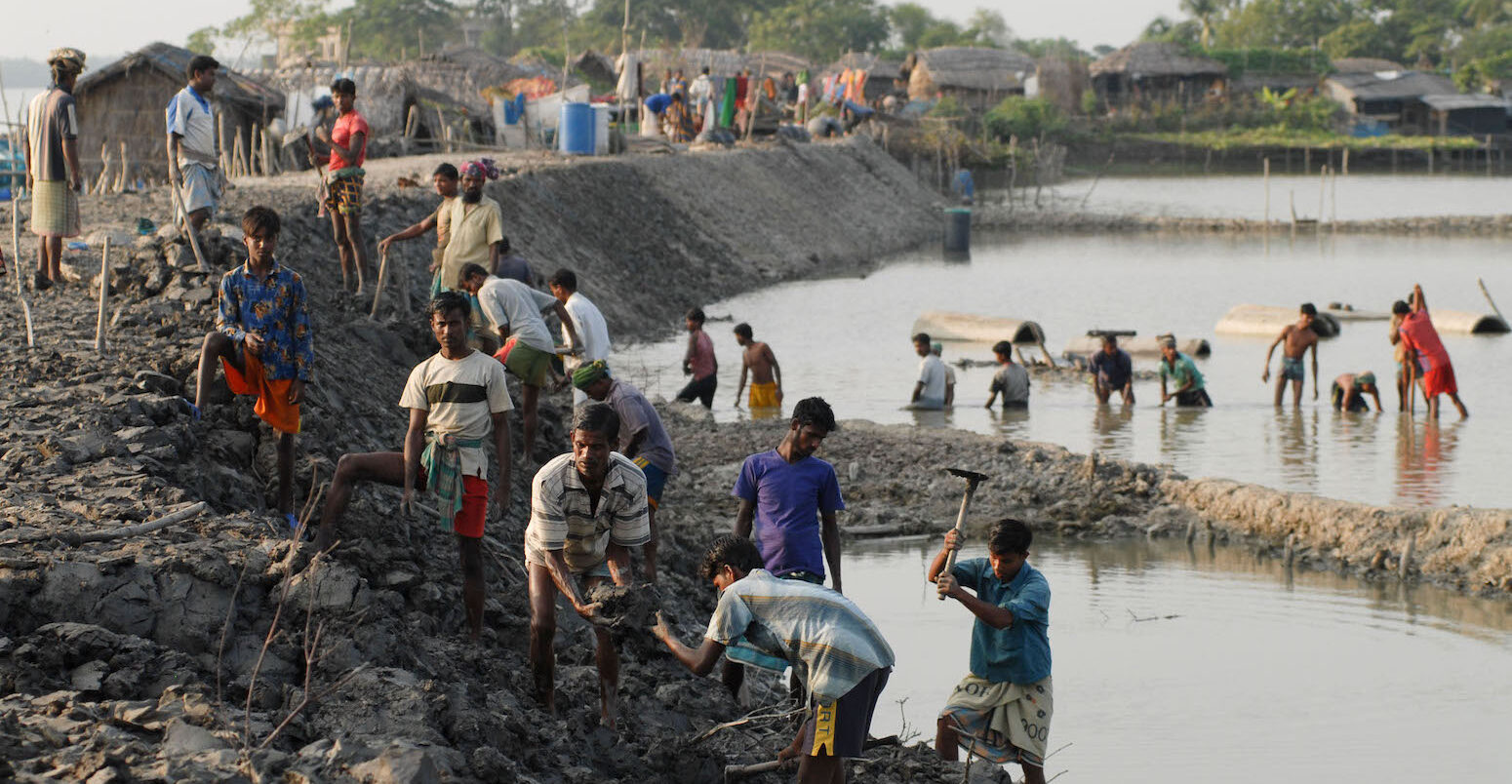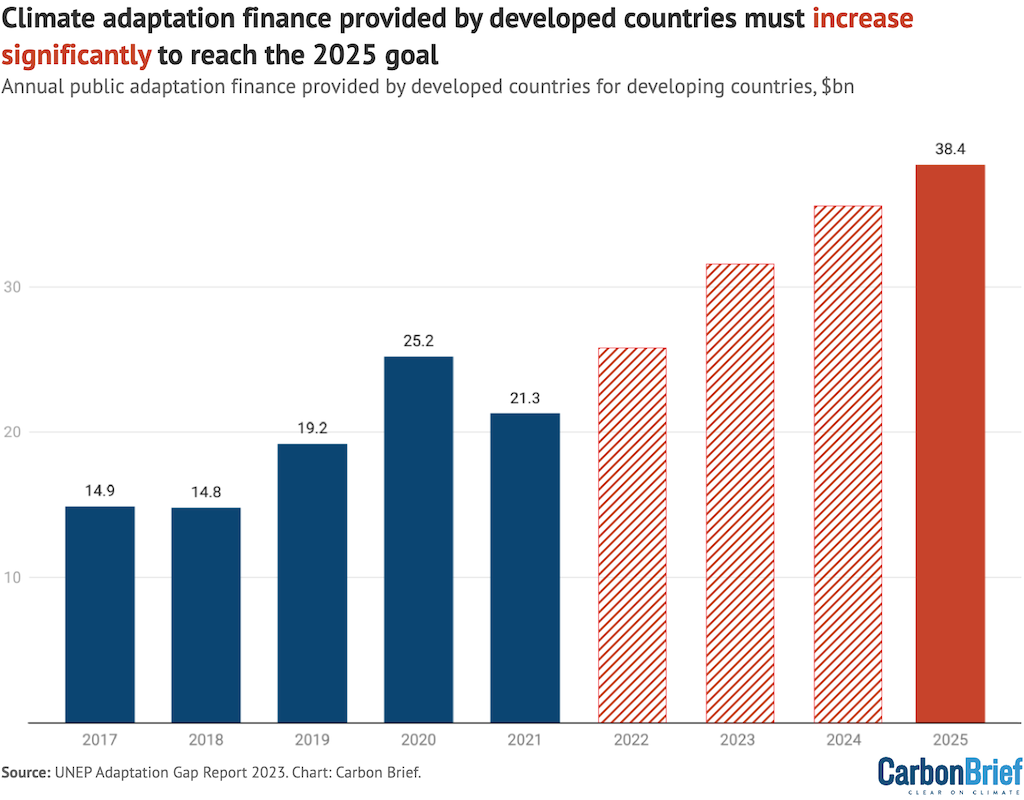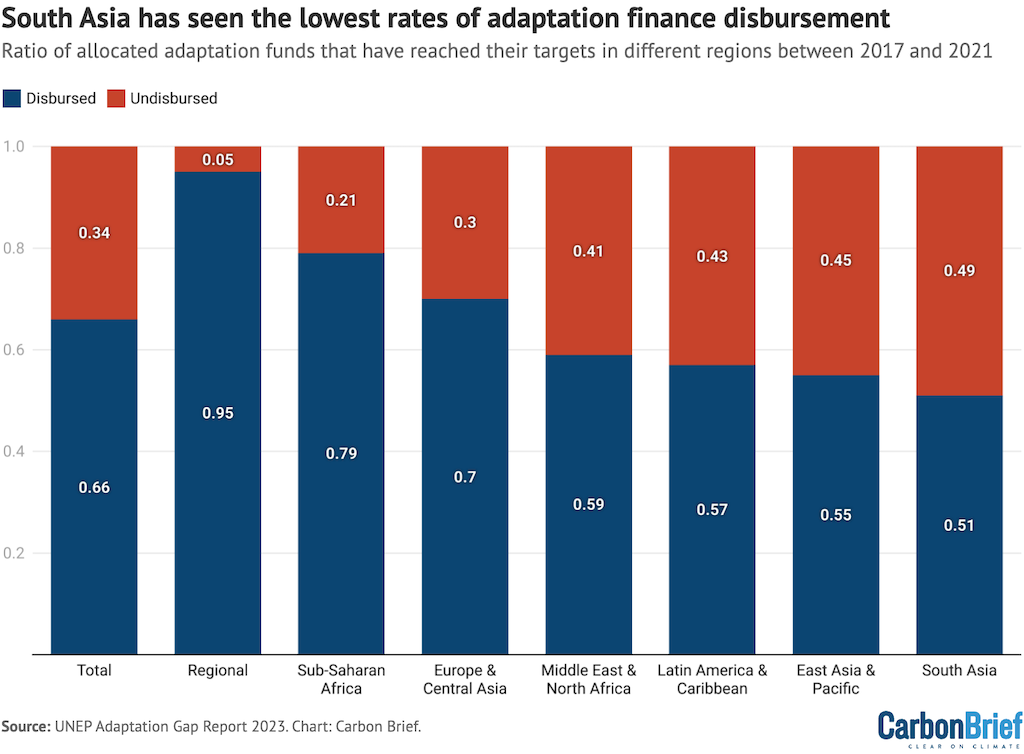
Guest post: Three major gaps in climate-adaptation finance for developing countries
Multiple Authors
11.02.23Multiple Authors
02.11.2023 | 10:00amDeveloping countries require hundreds of billions of dollars in investment every year to help them adapt to the rising threat of climate change.
Without this investment, more extreme floods, fires and hurricanes will place many more lives at risk and millions of people in the global south will be pushed into extreme poverty.
Yet, as it stands, there are major gaps in global adaptation finance.
In the new Adaptation Finance Gap Update, part of the UN Environment Programme (UNEP) Adaptation Gap Report 2023, we examine recent trends in adaptation funding.
Specifically, we focus on the flow of public adaptation funds from the governments of developed countries to developing countries, since the implementation of the Paris Agreement.
In this article, we identify three major gaps in adaptation finance and explain why these gaps have emerged even as nations commit to scaling up these funds.
Financial shortfall
Adaptation costs for developing countries are estimated at between $215bn and $387bn annually this decade, according to the latest Adaptation Finance Gap Update report.
Spending from the public funds of developed nations, while not the only source of adaptation finance, remains a crucial source, especially for low-income countries.
As it stands, people in the least developed countries (LDCs) and small-island states are often more exposed to climate hazards and more likely to be killed by climate-related disasters. This is despite the fact that these nations bear very little responsibility for causing climate change.
Under the Paris Agreement, developed countries agreed to achieve a balance in the amount of climate finance to adaptation and mitigation. However, far more funds have been channelled towards cutting emissions than preparing for climate impacts.
The commitments made by developed countries so far fall drastically short of the costs and needs expressed by developing countries.
Observed flows of public adaptation finance from these nations have been well below $30bn each year.
At the COP26 climate summit in Glasgow, developed countries pledged to double their adaptation finance contribution by 2025. However, as the chart below shows, progress towards this goal has fluctuated since the baseline year of 2019 (figures are not yet available for 2022 and 2023.)

In 2019, adaptation finance was estimated in our analysis at $19.2bn. To meet the commitment of doubling this amount by 2025, developed countries should aim to contribute at least $38.4bn per year toward developing countries.
However, a promising 31% increase in funding observed in 2020 was followed by a subsequent 15% decrease in 2021, complicating the path to achieving the target. It is noteworthy that while adaptation finance declined, finance for mitigation – that is, cutting emissions – continued to grow.
To reach the goal of doubling the finance, a consistent 16% average annual increase is required going forward.
Lack of local finance
Local organisations, people and communities are at the forefront of experiencing climate change impacts. Often, they are the most engaged and innovative in developing sustainable solutions to navigate these challenges.
Therefore, it is critical that these local entities are meaningfully involved in funded adaptation projects. However, there has been a lack of clarity on how much adaptation funding is intentionally directed to benefit local communities.
Our analysis provides comprehensive estimates of adaptation finance that mainly focuses on local communities, which cover both bilateral and multilateral sources.
Previous assessments have only covered dedicated climate funds such as the Green Climate Fund (GCF), the Adaptation Fund and the Global Environmental Facility (GEF). Despite their significance, these sources still only constitute a minor share – roughly 9% – of total public adaptation finance.
Our assessment reveals that less than 17% of total international public adaptation finance was allocated to projects with a specific focus on local communities.
Even though this represents an increase from a previous estimate of about 10%, it underscores a persistent and pressing need to increase financial support to local communities.
Struggling to reach the ground
Effective use of funds is essential to ensure that they serve their intended purpose, rather than inadvertently creating new challenges.
However, our research reveals that a significant portion of funding does not even reach its target.
Between 2017 to 2021, we estimate that only 66% of the allocated funds were successfully disbursed to their recipient countries. The remaining funds have not reached developing countries, for various reasons including project delays and lack of capacity.
In contrast, 98% of general development finance, covering other issues such as education and healthcare, was successfully disbursed within the same period.
This highlights the unique barriers in disbursing funds for adaptation projects. These include inadequate understanding of local markets during project planning, limited climate policy knowledge among decision-makers and bureaucratic delays in fund approval and disbursement.
The adaptation disbursement gap varies regionally. South Asia received merely 51% of allocated funds, whereas sub-Saharan Africa, home to most LDCs, had a higher disbursement ratio of 79%.
This discrepancy is likely due to sub-Saharan Africa receiving a higher amount of grants, which tend to have better disbursement ratios.

It is essential to note that these figures predominantly represent data from bilateral sources, meaning funding provided country-to-country.
Comprehensive data on disbursements from multilateral organisations, including the World Bank and other development banks, remains limited. This is significant as most (61%) international public adaptation finance for the global south comes from these sources.
Moving forward
Our analysis shows that adaptation finance goes beyond being a single aggregate number and requires alignment with local situations.
It also indicates that a collaborative approach involving both finance providers and recipients is required to identify and solve existing gaps.
Bridging these gaps could drive a shift towards climate justice, wherein vulnerable, developing countries are not excessively burdened by climate change. Conversely, neglecting them could exacerbate loss and damage in those countries.
Negotiations at the upcoming COP28 in the United Arab Emirates (UAE) present an opportunity for world leaders to establish measures to address these gaps.
-
Guest post: Three major gaps in climate-adaptation finance for developing countries




